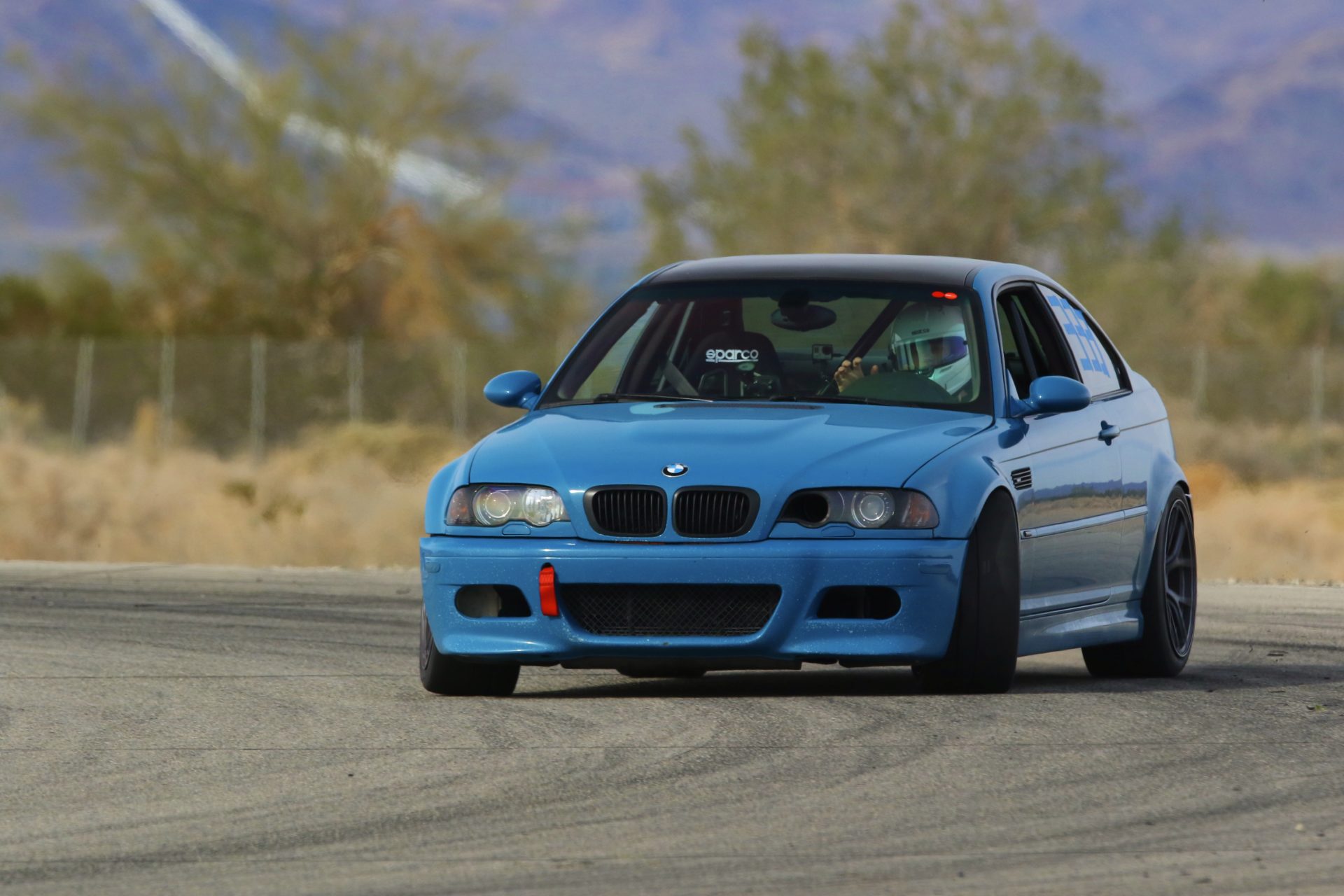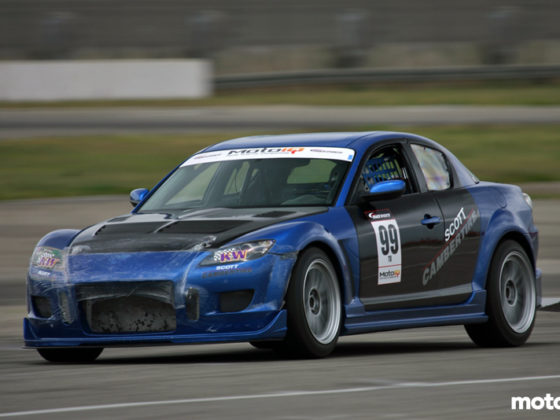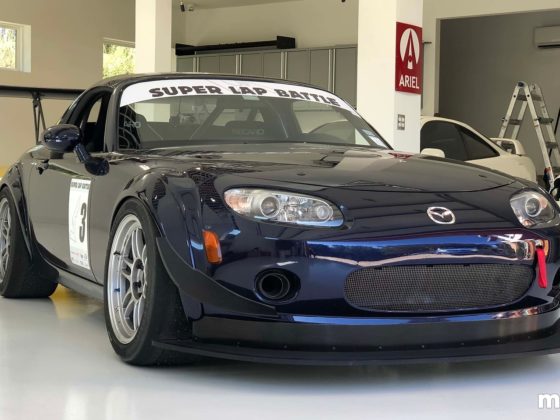It’s certainly no secret that the BMW S54 engine in the E46 M3 is special. For its time, it achieved a very high specific power output (105-110HP/L depending on model) for a mass-production naturally aspirated engine designed for high mileage and standard pump fuel.
One of the ways BMW achieved that high specific horsepower was by reducing internal friction. For example, the rod bearings are narrow with unusually tight tolerances, and the oil pump was designed to provide a maximum of 4 bar (58psi) to the engine. The engine was also designed to rev high, with a factory 8000 RPM redline, and peak power occurring right at the top. With a 91mm stroke, this translates to a Mean Piston Speed of 24.3 m/s – still one of the highest for a production car.
The high-stress nature of the bottom-end of the S54, coupled with its (in some ways) fragile oiling system, means high engine oil temperatures, and increased likelihood of engine damage as a result. For any owner of an E46 M3, especially those planning to drive on track, keeping oil temperatures in check and using a high quality oil is critical.
Unfortunately, I became intimately aware of these oil system issues when the original engine in my 2001 E46 M3 spun a bearing at just under 100k miles. I knew I wanted to take the car to the track regularly, so when I had Pure Performance in Lake Forest, CA build an engine, I wanted to make sure it was bulletproof. This included Carrillo connecting rods with CARR rod bolts and Calico-coated rod bearings, and JE pistons.

The engine has been dead reliable for years, but in the spring and summer months of California, it was hard to complete an entire track session without seeing alarming oil temperatures, which seems to be the norm for S54 engines when driven hard, especially in the summer months of SoCal. The last 1000 RPM of the rev range seems to really send the oil temps climbing, but is also where the engine is strongest.
The factory oil temperature gauge uses a combination temperature and level sensor installed in the oil pan. While the sensor does read oil temperature, BMW was worried about customers unnecessarily worrying about their oil temperatures varying wildly based on ambient temperatures and driving conditions, so the oil temperature gauge within the factory gauge cluster uses a combination of oil temperature, water temperature, and ambient air temperature to “spoof” the oil temperature gauge slightly, to prevent it from fluctuating excessively. Worried I wasn’t getting the full story or a true reading, I added an aftermarket AEM oil temperature sensor, wired directly to the AEM Infinity ECU I have on the car, so I could accurately monitor temperatures.
I was seeing 260-270*F oil temps on track, sometimes halfway through a 20 minute session. Luckily, the water cooling system seems to be overbuilt, and I never see over about 195*F water temp. However, once oil temps crept up past about 260F, oil pressure really started to suffer as a result. I’d see 5-10 psi less for a given RPM, quite suddenly, and this was enough to force me to pull off track early or at least do a full cooldown lap.
Having to cut track sessions short or stick to the cooler months of the year was getting old, so I knew I had to look for a solution. The E46 M3 already has a factory air-to-oil cooler mounted directly under the water radiator. All factory ducting was intact, so I knew I had some work to do to improve cooling.
I first tried the relatively cheap and common “oil diverter valve” modification, which eliminates the oil cooler thermostat and directs all oil flow through the cooler, as opposed to the factory thermostatically-regulated valve that, even when fully warm, limits flow through the oil cooler. Unfortunately, with this diverter valve I saw little to no reduction in oil temperatures while on track, but the oil now took twice as long to come up to temperature when driven on the street. In the winter months, the oil often wouldn’t warm up past 170*F, which I knew was a bad idea long-term, as it can prevent moisture and contaminants from evaporating out of the oil especially from repeated cold-starts. I ended up removing the oil diverter valve and returning it to factory, as it really only seems to be a suitable option for a dedicated track-only car.

I then turned to CSF Racing’s all-aluminium dual-pass race-spec oil cooler kit, CSF # 8032. Their oil cooler for the E46 M3 is made from a bar-and-plate core, with extruded aluminium end tanks, and is fully TIG-welded. All of this makes the cooler extremely robust – critical when you consider that the factory oil cooler location is mounted very low at the front, in a prime place for rocks or road debris.

CSF’s oil cooler also has double the capacity of the factory unit, along with increased frontal area, yet still easily fits in the factory location.




13 comments
pfft… just 260? My Miata leveled out in the 290’s and I kept lapping it… tho to be fair I didn’t care if that engine let go, but its still running
Generally, bearings start to lose load-bearing capacity at 260 degrees. The B6ZE is a very strong engine with a lot of bearing area and low power, you can probably get away with this for quite a while.
Great article! Always good to have a well written story that builds from what to why to how and then, best of all, to the data. Unrelated questions: in the last picture on page 2, are those orange cylinders remote fluid reservoirs for your front dampers? If so, why are they so far from the dampers and isn’t adjusting them difficult (since they look to only be accessible with the bumper cover removed)?
Thank you!! Yes, those are the remote reservoirs. There aren’t many places to pass the reservoir lines through safely in the front – most people run them forward and then up into the engine bay somewhere, often on the strut bar. I was worried about engine bay heat, particularly on the exhaust side, and actually despite them looking far away here, it was a pretty straight shot forward thru the OE brake ducts and into the bumper area. I can get to them pretty easily with the hood open. It is a bit of a weird location, though..
I too know the pain of the ‘cool down lap.’ I have a mishimoto rad and electric fan on a wish list, but this is much much more affordable.
Does the car have any other aftermarket cooling mods?
Does the CSF retain the oil cooler thermostat?
Thanks,
Matt
Factory water radiator still, as water temps typically stay at or just above thermostat temp. I’ve deleted the clutch fan as they have a tendency to explode with track use, and I found the car didn’t need anything other than the factory AUX fan even with traffic in the summer with A/C on. I did set the AUX fan to kick in a bit earlier than factory although it’s disabled above ~40mph.
The CSF oil cooler does retain the factory 80c oil thermostat , which is in the oil filter housing. That’s it for cooling mods!
Excellent, thanks for the reply!
Nice work on the data collection! I see lots of goodies on your car 🙂 I’m a little shocked at how… not elegant the original cooler is. Single pass with a tube to bring the oil back across. So I’m not surprised the CSF cooler has similar/better pressure drop and much better cooling. Double pass and much thicker for the better cooling and the greater flow area keeping the pressure drop low.
with the new cooler did you reverse the oil thermostat mod or was it still all cooler all the time?
Hello. I wonder what’s the difference between indicated oil temperature on the gauges cluster and the temperature from the AEM temperature sensor? It would be nice to know what’s the real temperature, so I don’t have to worry too much. Thank you very much! 🙂
It’s worth emphasizing that you compared an OEM oil cooler with 120K miles on it that looks beat to hell to a brand new aftermarket unit. A true comparison would be a new OEM unit vs. the CSF cooler. I wouldn’t be surprised if a brand new OEM unit yielded similar results.
It probably would not have.
Greetings all, I have a Mishimoto radiator on my e46 M3 and I am not sure if I want to install the Mishimoto electric fan it came with it when I purchased it a few months back and delete the factory clutch fan as my car does not see much of track usage. now I want to install an oil cooler but I don’t know which one to buy CFS or Mishimoto? been doing some research and I couldn’t find any data on the Mishimoto oil cooler like the one posted about the CFS cooler on this amazing and pretty helpful article.
Any recommendation will be really appreciated.